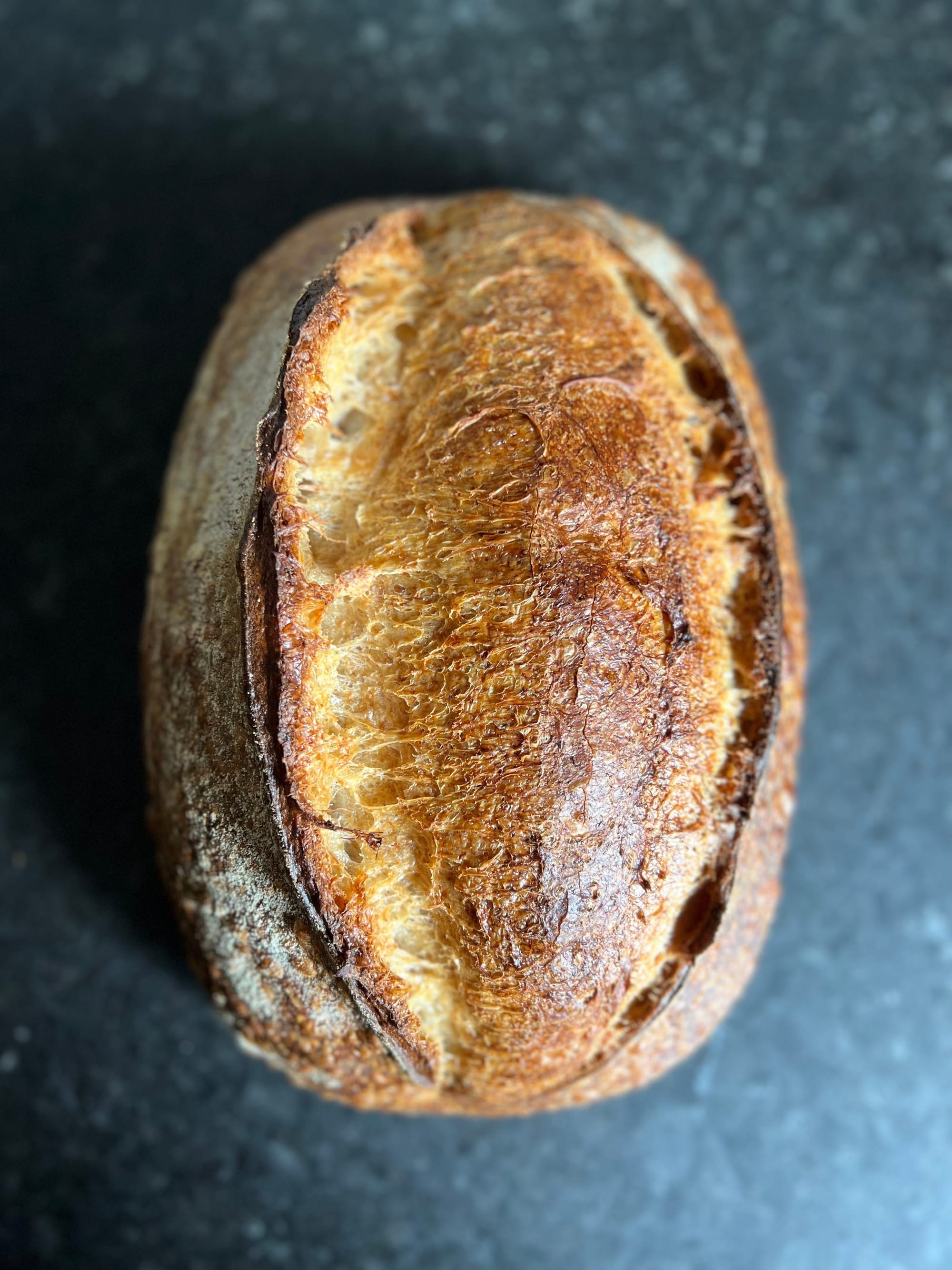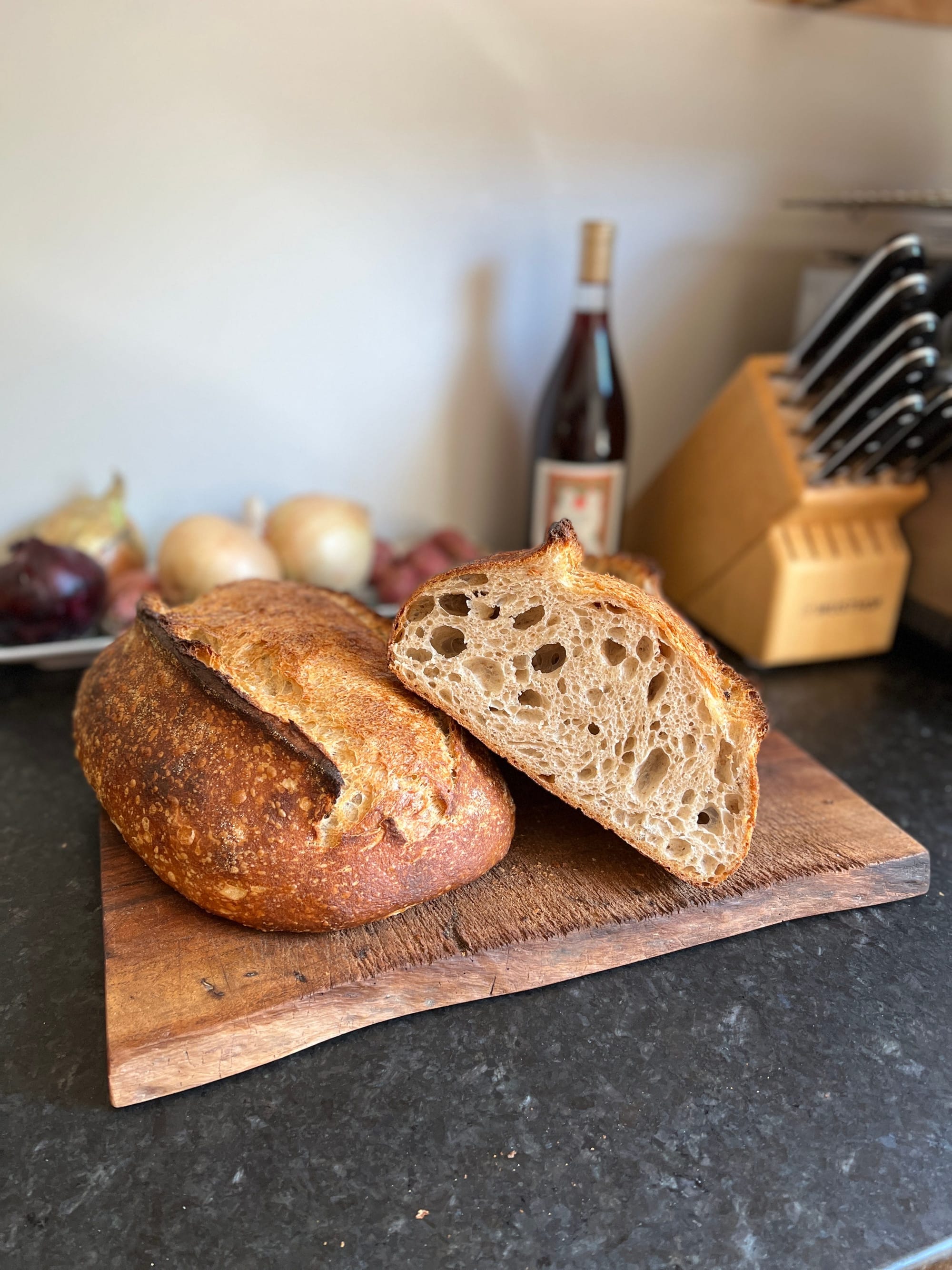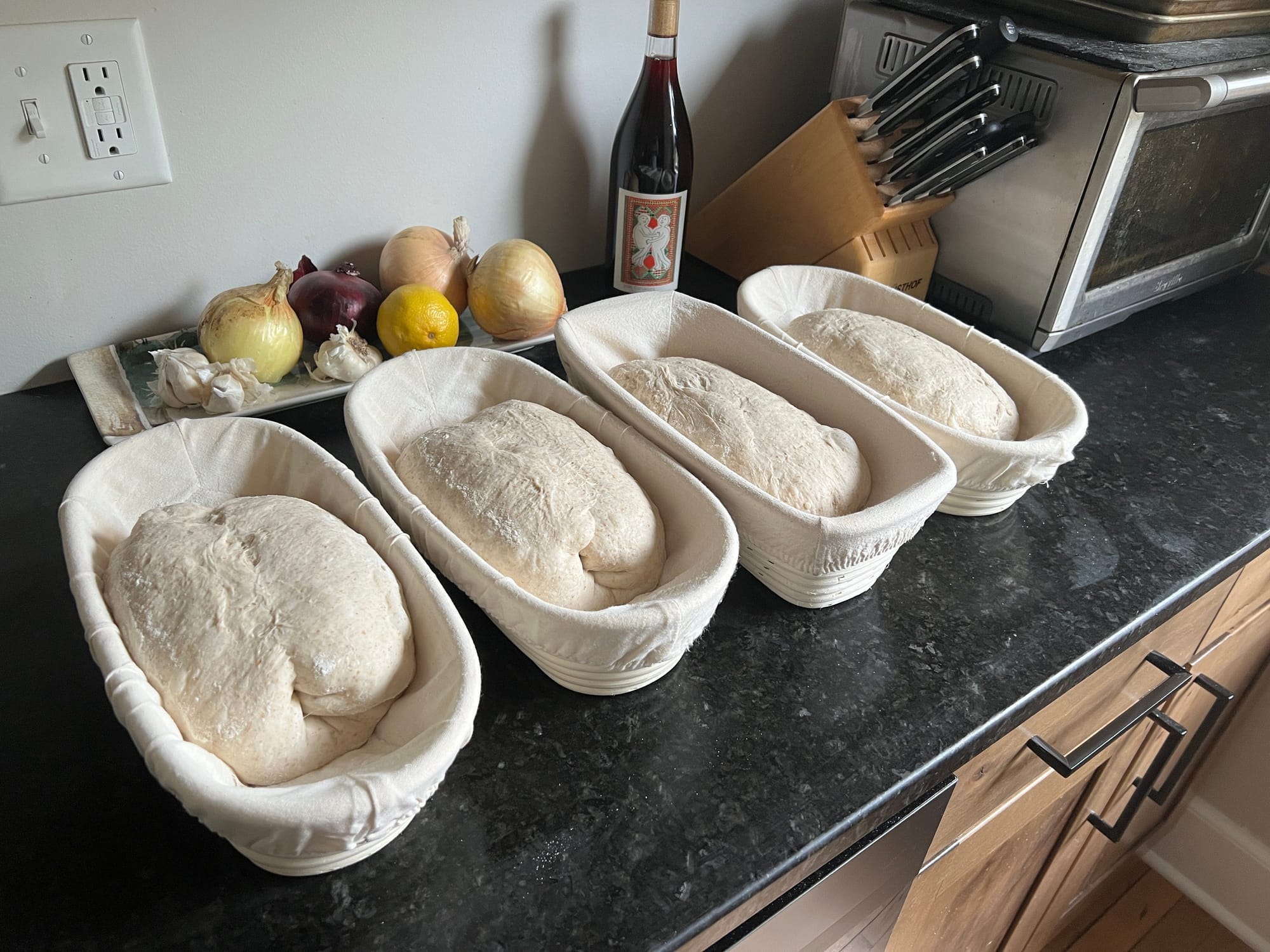When Instagram Can’t Help You with Troubleshooting
A guest post from Jesse Raub

Table of Contents
This week we have a great guest post from writer and baker Jesse Raub, on his journey to making friends with his starter, something every serious sourdough baker needs to do sooner or later.
But first I wanted to be sure that you all saw the peach preserve recipe I posted yesterday, for anyone who wants to sock some end-of-summer stone fruit away for the future pastry recipe I will be sharing here eventually:
(Said hypothetical recipe will be doable using frozen peaches too, if you don’t get around to canning some now.)
—Andrew
When Instagram Can’t Help You with Troubleshooting
Essay and photos by Jesse Raub

Healthy, active starter—these three words are the bane of every new online sourdough baker. It doesn’t matter how many videos online you watch, how many step-by-step guides you read, how many Instagram DMs you get answered, you’re still on your own judging if your starter is ready to leaven an entire loaf of bread.
There are indicators, of course—active bubbles forming in the slurry, even bubble development around the diameter of the starter jar, and the rubber-band test are all good clues for starter health. But even when you see your starter doubling in size or even tripling in size, you might not be there yet. A friend recently reached out to me as he was trying to get a new starter off the ground. He was following starter guides step-by-step, religiously timing his feedings, sourcing specialty rye flour for extra oomf, and tracking his progress with photos. Five days in he texted me with a bevy of exclamation marks: i think its ready!!! I told him he might have to wait, and just give it time to develop. A day and a half later he sent me a photo of three long, flat, pancakes he’d pulled out of his baguette cloche accompanied by a series of crestfallen texts: i don’t know what happened, it looked so ready.
It’s not that I have a sixth sense, or even that much baking experience. It’s the exact opposite: I came to sourdough bread around the same time as most people, March 2020. Already working from home for two years, I’d developed a standard pattern for no-knead yeasted breads. I even bragged about it online.
Yeah, but have you ever tried to use a sourdough starter? my friend replied in the comments.
It’s not that I wanted an extra challenge as much as I was responding to his challenge: okay, hotshot, tell me what to do and then let's see whose loaves stand tallest. Off I went. After his basic timing guide, I bugged another friend for details about her feeding schedule. I stumbled on a local baker, now stuck at home, how created a how-to Instagram story series I could follow along with. I started digging around for where to source good flour and how to find it when all the grocery store shelves were bare. And when I was confident in my starter’s growth schedule, I mixed my first dough and was off to the races. We had liftoff: a big, round boule with a shark fin ear and more rise than I’d ever seen in my yeast breads.

Of course that didn’t last long. As I started trying to follow more best practices, ordered actual bannetons rather than using ceramic bowls, tried new, professional shaping techniques, my breads all pancaked. Hard. I became convinced my puddling doughs were the result of flour with too low of a protein percentage. I just knew the issue had to be a lack of proper gluten development. Everything was the problem, of course, except, the starter. And that’s when I smelled it.
What I had in that jar smelled less like a heady, bready sourdough starter and more like a problem that had erupted out of someone’s bowels. I gasped. Never did I ever imagine I would have to Google “what to do when sourdough starter smells like farts?” and yet, there I was, standing in my kitchen, staring at my phone. There aren’t a lot of detailed answers to this question, but the long and short of it, I found out, was “there is bad bacteria in your starter, and you should try to feed it more regularly until it balances out.”
And feed it more regularly I did. I began reading about various starer ratios, I began timing out my feeding schedules more distinctly. I had realized that my “every 12 hour” feeds had been more like “7-8 hours overnight” feeds, with an extended feeding window between morning and night. So I let it grow, recede, grow, recede, and eventually, like all things in this world, the stink was only temporary. I had vanquished it with time and patience.
Not only was my starter now healthier, it leavened bread better. I had Instagram worthy loaves with full ears and blistering crusts. I had deep, rich flavor and open, even crumb. I was on top of the world, until, two years later, it all came crashing down again.

My crumb started to get gummy. My loaves would spread wide during the bake, re-absorbing the score line into an oblong mess. Something was going wrong with my starter, and that’s when I smelled it.
On my first whiff, I inhaled the sweetest, most luxurious cider aroma that tickled my nasal passages. It was one of the most delicious things I’d ever smelled. And then back to Google: “what does it mean if your starter smells sweet?” to try and find the culprit.
I had already started to piece together that my problems had started when I switched flours in my starter. I had moved, and was excited to incorporate a local mill’s whole wheat selections in my breads, and figured it would be a great replacement for the rye I had been using in my starter. It took a few days before I found a few different clickbait sites that suggested that a sweet smelling starter might be the result of too much amylase production.
Ah, yes, a baker friend wrote back to me when I asked him about it. Too much enzymatic activity. It usually happens when there’s too much food for the starter and it feeds really aggressively. Weird that you’re experiencing it, though, that’s a pretty rare occurrence.

Nothing about the starter ever looked off, but for a few weeks I struggled to get my bread to match what it had. I did some thinking and realized that my standard flour was a malted flour, something to help accelerate my rise. The new flours I had been introducing came from a stoneground mill, where the flour is less sifted and more coarsely ground. The combo of those two was making my starter go cuckoo-bananas.
Equipped with that knowledge, I swapped my stoneground whole wheat for a rye flour milled by a local bakery instead. And I tackled the plan like I always did: feed it more regularly until it evens out. After a few days, it did. Gone was the sickeningly sweet apple nectar aroma wafting out of my starter jar, replaced now by a lightly bready, softly sour scent. And my breads have never looked or tasted better.
It’s easy to want to wrest control of the situation when you aren’t seeing the results you want. My friend trying to fix his baguettes kept texting me the same thoughts I had when I first started baking: “maybe i need to do some slap and fold to build more strength,” “maybe the hydration ratio is wrong,” “maybe i need higher protein flour so it holds more shape.” I told him to be patient, and just let the starter develop more. That, if you set up the environment correctly, the starter would do all the work for you.

Sure, mixing technique, strength building, hydration, flour selection, shaping, and baking can all impact the final bread, but for most people, the key to great bread takes time, patience, and a healthy, active starter. And for most people looking for guidance online, that’s not always easy to judge. If you take the time, take a deep breath, and know where to ask the right question, however, you might just get your starter health back on track.
Jesse Raub is a writer for Serious Eats and an amateur bread baker. He previously spent 16 years in sales and education in the specialty coffee industry, and you can also find bylines from him in a variety of other outlets. Find him on Twitter at @jesseraub or at his occasional Substack newsletter goodones.substack.com.
wordloaf Newsletter
Join the newsletter to receive the latest updates in your inbox.





